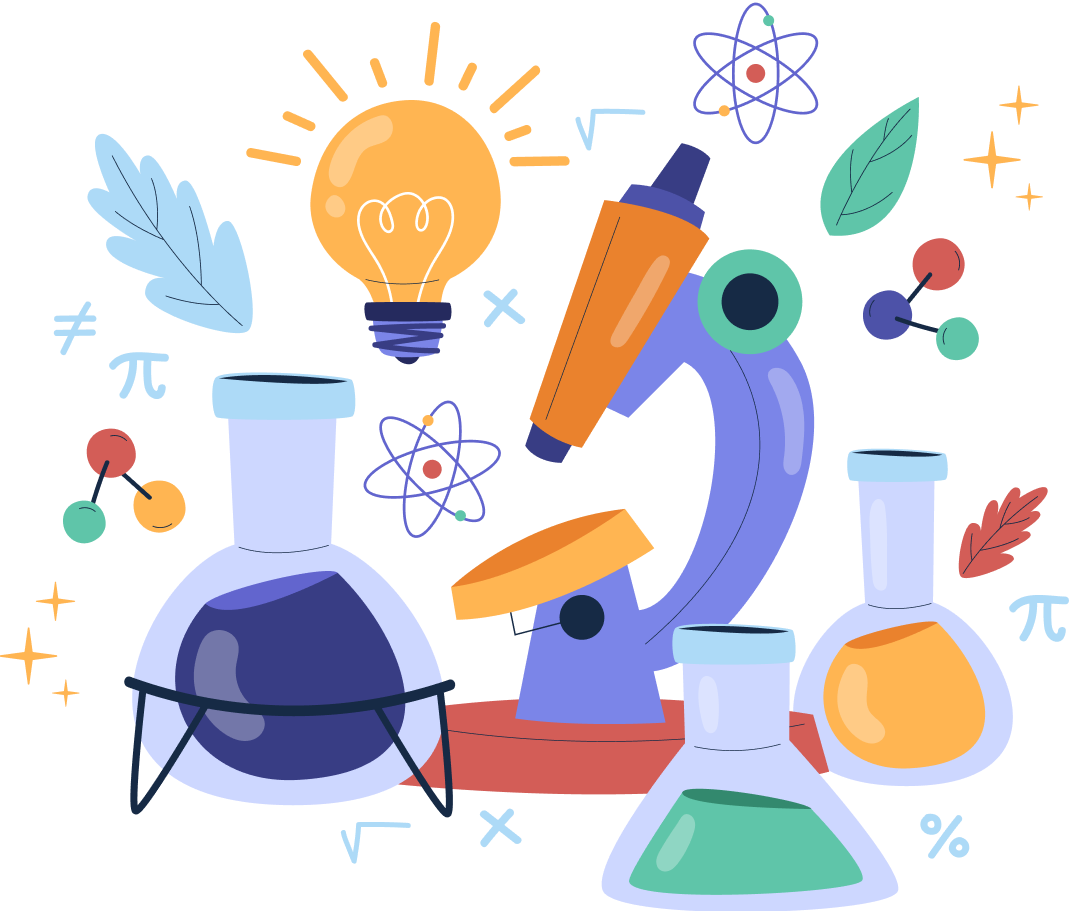Life Processes – Complete Guide For Class 10 Science Chapter 5
Welcome to iPrep, your Learning Super App. Our learning resources for the chapter, Life Processes in Science for Class 10th are designed to ensure you grasp this concept with clarity and perfection. Whether you’re studying for an upcoming exam or strengthening your concepts, our engaging animated videos, practice questions and notes offer you the best of integrated learning with interesting explanations and examples.
The journey through Life Processes is like peering into the very mechanisms that keep living organisms alive and functioning. From the food we eat to the air we breathe, every living being undergoes vital biological processes such as nutrition, respiration, transportation, and excretion to sustain life. In CBSE Class 10th Science Chapter 5 – Life Processes, you’ll discover how these functions work together to maintain balance within the body, enabling organisms to grow, develop, and thrive in their environments. Let’s dive deeper into these fascinating processes and uncover the secrets behind what keeps us alive!
Introduction to Life Processes
Life processes are essential activities that maintain life in living organisms. These processes include nutrition, respiration, transportation, and excretion, and they are necessary for the survival and functioning of all living beings.
Life Processes Overview
| Life Process | Details |
| Nutrition | Intake of food to fulfill energy needs. |
| Respiration | Oxidation of organic substances to produce energy. |
| Transportation | Movement of substances within the body. |
| Excretion | Removal of metabolic wastes from the body. |
Let’s move towards each one of them separately:
Nutrition
As stated in the chapter Life Processes, Nutrition is the process through which organisms obtain food from their environment to fulfill their energy requirements.
Types of Nutrition
| Type | Details |
| Autotrophic | Organisms prepare their own food from inorganic substances (e.g., plants). |
| Heterotrophic | Organisms depend on others for food (e.g., animals, humans). |
Autotrophic Nutrition
Autotrophic nutrition involves the synthesis of food by organisms from simple inorganic substances, utilizing external energy sources such as sunlight. Green plants, for example, prepare their food through photosynthesis.
Photosynthesis: A process where green plants convert carbon dioxide and water into food (glucose) in the presence of sunlight and chlorophyll.
Heterotrophic Nutrition
Heterotrophic nutrition involves the intake of preformed organic substances. Organisms like some microorganisms, animals, and humans depend on others for their food and energy needs.
Heterotrophic Nutrition in Amoeba
In Amoeba, a unicellular organism, the nutrition process occurs in the following steps:
- Intake of food using pseudopodia.
- Digestion of food in food vacuole.
- Excretion of undigested food from the cell.
Heterotrophic Nutrition in Human Beings
Humans exhibit Holozoic Nutrition, where they intake complex organic food substances prepared by others and digest them internally.
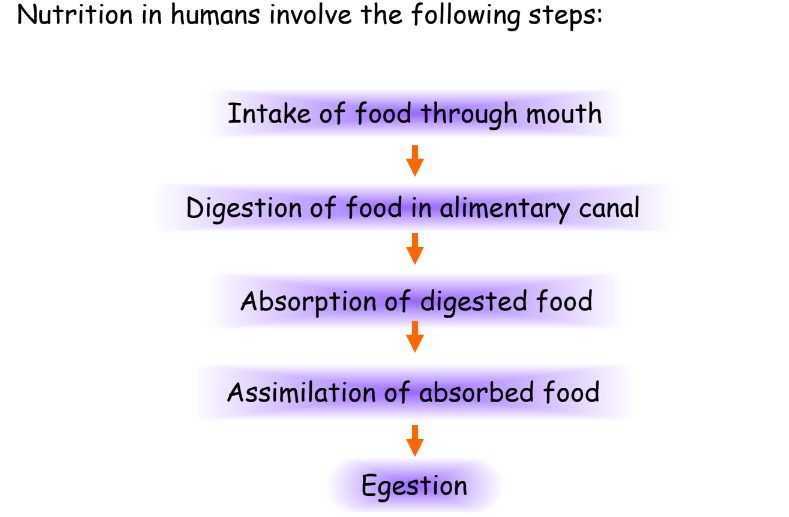
Human Digestive System
The human digestive system is responsible for breaking down complex food into simpler substances that can be absorbed by the body.
Steps in Human Digestion
- Mouth: Breakdown of food by teeth and salivary enzymes.
- Oesophagus: Movement of food to the stomach via peristaltic movements.
- Stomach: Digestion of food by gastric juices.
- Small Intestine: Emulsification of fats by bile, followed by complete digestion.
- Absorption: Digested food is absorbed in the small intestine through villi; water is absorbed in the large intestine.
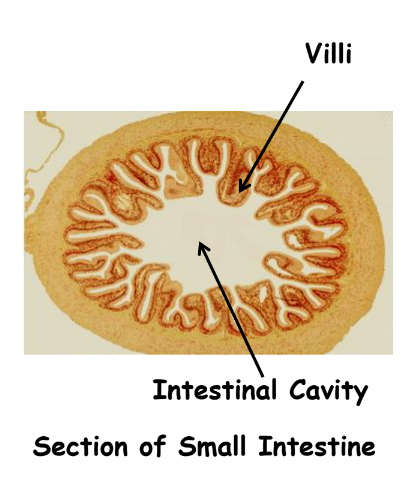
- Assimilation and Egestion: The utilization of absorbed food and removal of undigested food are called assimilation and egestion respectively.
It involves the following steps:
- Moves from small to large intestine and then to the rectum
- Egested out from the rectum through an opening called the anus
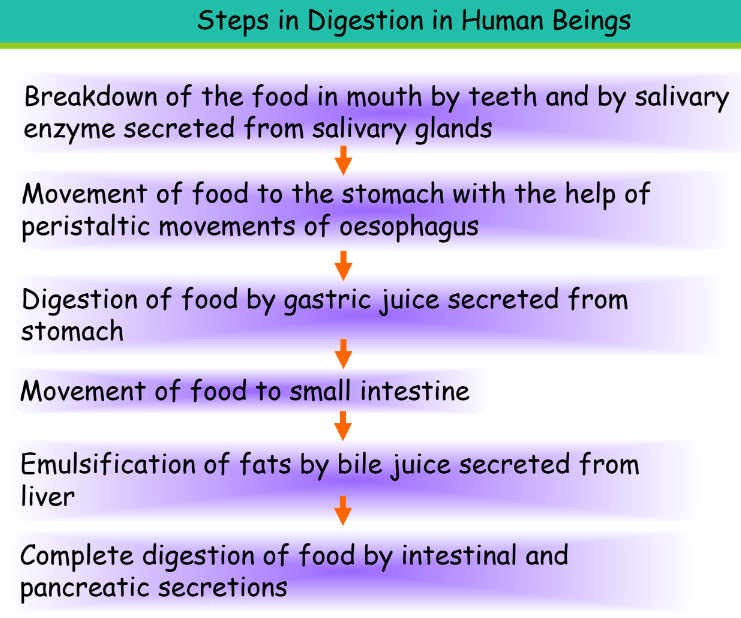
Respiration
Respiration is the process of oxidizing organic components to produce energy in the form of ATP molecules. This occurs in every cell of the body, known as cellular respiration.
Types of Cellular Respiration
| Type | Details |
| Aerobic Respiration | Oxidation of glucose with oxygen. |
| Anaerobic Respiration | Fermentation processes without oxygen (e.g., lactic acid fermentation, alcoholic fermentation). |
Products of Respiration
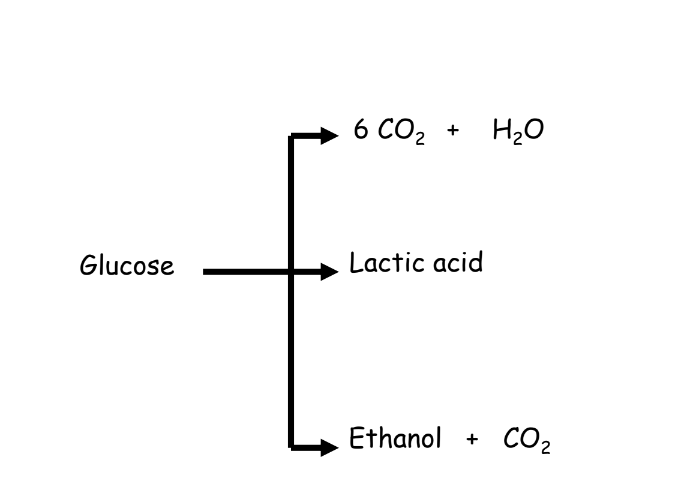
Breathing Apparatus
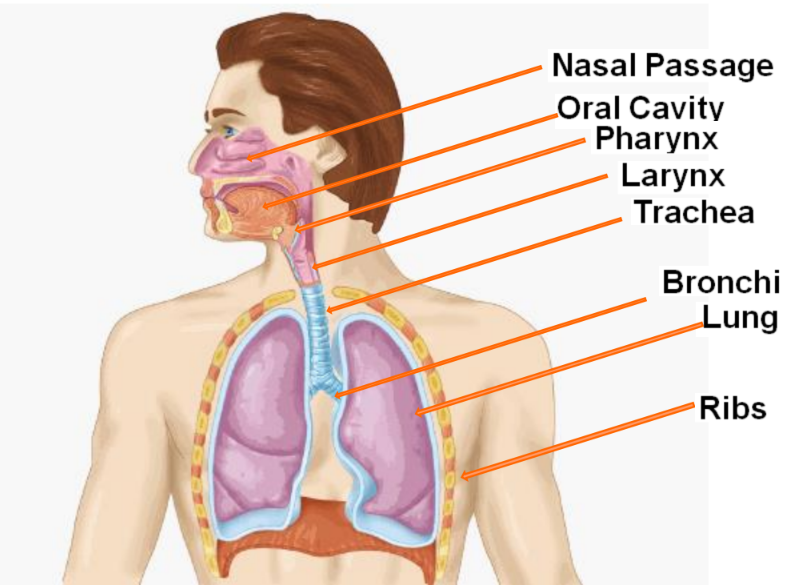
Human Respiratory System
The main units for gas exchange in the lungs are sac-like structures called alveoli.
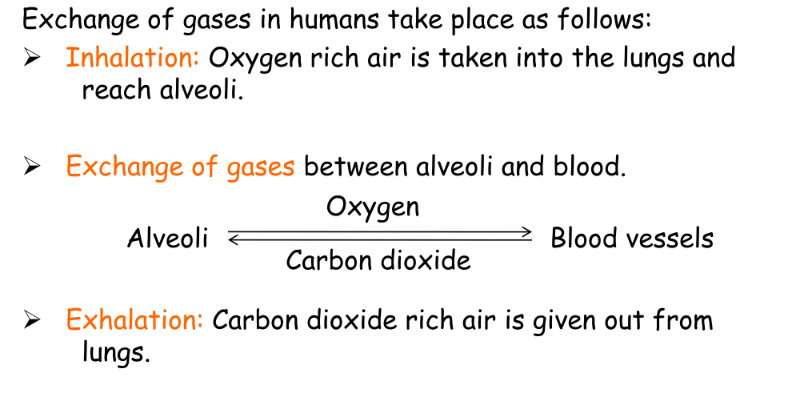
Transportation in Human Beings
The transportation of substances within the human body is carried out by the circulatory system, which consists of blood, blood vessels, and the heart.

Composition of Blood
| Component | Details |
| Cellular | WBC, RBC, Platelets |
| Acellular | Plasma |
Blood Vessels
| Type | Details |
| Arteries | Carry oxygenated blood away from the heart (e.g., Aorta). |
| Veins | Carry deoxygenated blood towards the heart (e.g., Vena cava). |
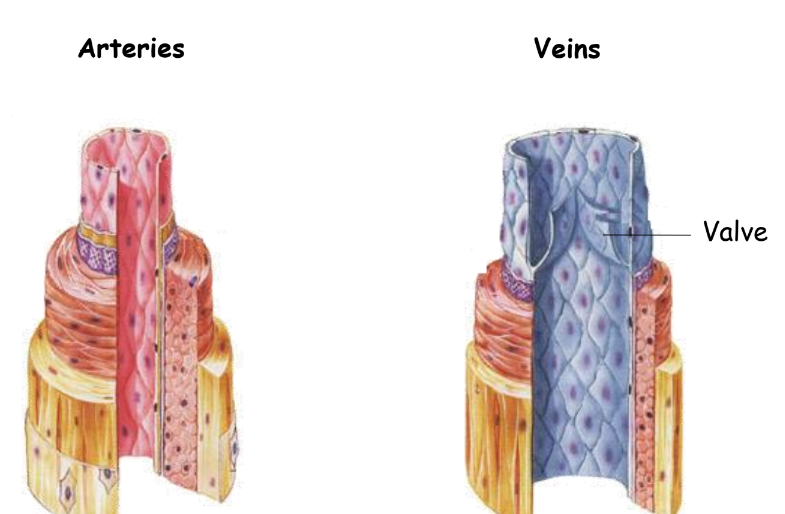
Human Heart
The human heart is a muscular organ responsible for pumping blood throughout the body. It consists of four chambers: two atria and two ventricles.

Circulation of Blood through the Heart
| Type of Blood | Details |
| Oxygenated Blood | Pulmonary veins -> Left atrium -> Left ventricle -> Aorta -> Body parts |
| Deoxygenated Blood | Body parts -> Vena cava -> Right atrium -> Right ventricle -> Pulmonary artery -> Lungs |

Circulation of Blood through Heart Lymph
- A white-colored extracellular tissue fluid containing plasma, WBCs, and nutrients but lacking red blood cells
- Formation of lymph: Leaking of cells and proteins from blood vessels into extracellular space
- Functions: Absorption and transport of digested fats from the intestine, drainage of excess extracellular fluid back into blood.
Excretion in Humans
As stated in the chapter Life Processes, Excretion is the process of removing metabolic wastes from the body. The main organs involved in the excretion of nitrogenous wastes form the excretory system.
Human Excretory System
The excretory system in humans consists of:
- Kidneys: Filter blood to form urine.
- Ureters: Transport urine from the kidneys to the bladder.
- Urinary Bladder: Stores urine.
- Urethra: Expels urine out of the body.
The nephron is the main excretory unit of the kidney, filtering wastes from the blood.
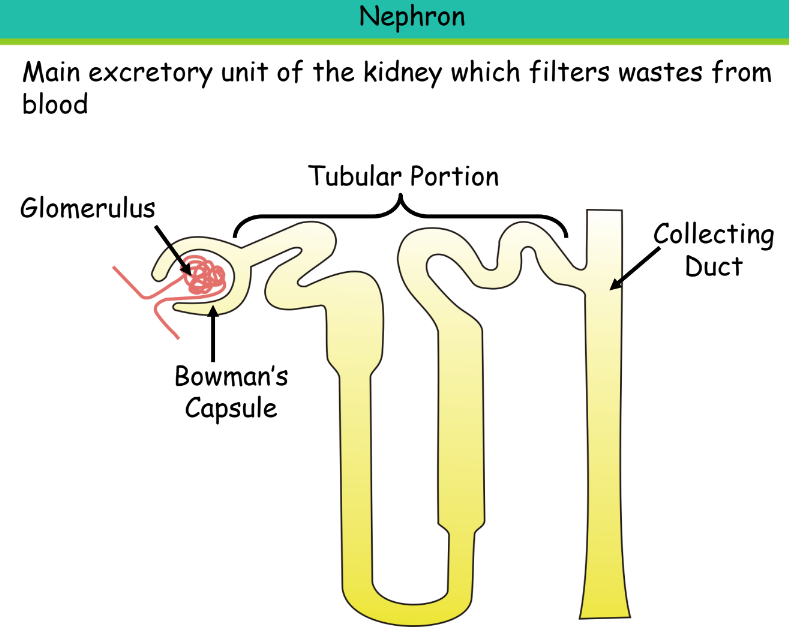
Urine Formation

Excretion in Plants

Transportation in Plants
Transport of Water: Conducted through xylem tissue, involving the pull exerted by transpiration, aiding in the upward movement of water and minerals from roots to leaves.
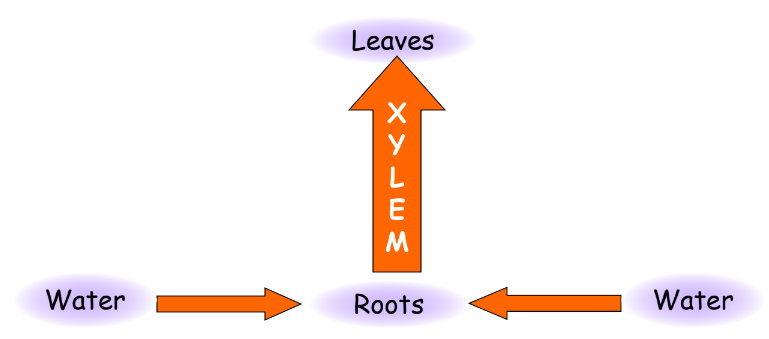
Transport of Food: Conducted through phloem tissue, transporting food substances from leaves to various parts of the plant.
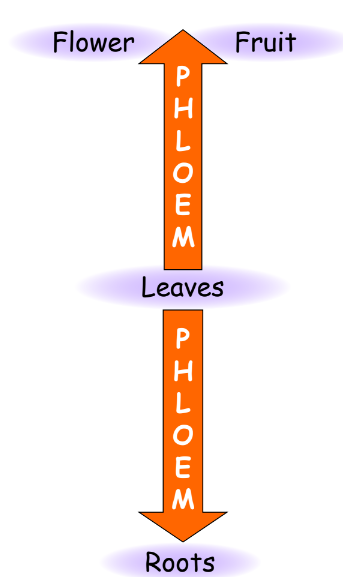
Conclusion
In conclusion, Chapter 5 of CBSE Class 10th Science, titled Life Processes, delves into the essential activities that sustain life in living organisms. Through our exploration of Life Processes, we have examined critical functions such as nutrition, respiration, transportation, and excretion, which are vital for the survival and well-being of all living beings.
By understanding these processes, students can appreciate the intricate systems that allow organisms to thrive in their environments. We hope that our resources at iPrep for Life Processes will enhance your learning experience, providing you with clear explanations and practical examples to solidify your understanding.
As you continue your studies, remember that the concepts in Life Processes form the foundation for comprehending more complex biological interactions, making it an essential chapter in your scientific education. Happy learning!
Practice questions on Chapter 5 - Life Processes
Get your free Chapter 5 - Life Processes practice quiz of 20+ questions & detailed solutions
Practice Now





